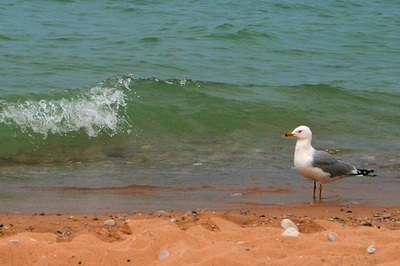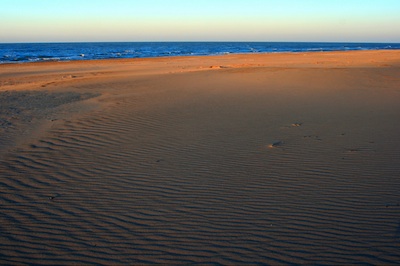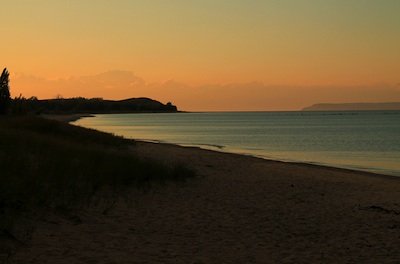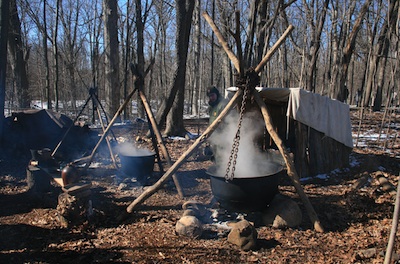I recently had the opportunity to visit Michigan’s Sleeping Bear Dunes National Lakeshore. I’ve been there a couple of times before, but this was my first time back since becoming a scholar of national parks.

Watching waves at Sleeping Bear. Bob Pahre photo.
Sleeping Bear has a very different feel than my local lakeshore, Indiana Dunes. Indiana Dunes is a patchwork of units interspersed with industrial sites such as steel mills, power plants, and industrial ports.
Indiana Dunes divides conceptually into the beach – very popular in summer – and “beyond the beach,” as the local chamber of commerce likes to describe it. The chamber of commerce has in mind the restaurants, hotels, and shopping opportunities, but for me, “beyond the beach” means the extraordinary biodiversity of the dunes and the wetlands behind them.
The communities around Sleeping Bear Dunes seem much more connected to the lake and the lakeshore. You wouldn’t talk about going “beyond the beach” here.

Empty beaches come winter at Indiana Dunes. Bob Pahre photo.
Sleeping Bear lies in a community defined by fishing, boating, and second homes. There are small ports here, which are now marinas for pleasure craft. The older fishing towns have become revitalized tourist destinations. One is a historic district in the national lakeshore. Second homes, bed-and-breakfasts and small resorts dominate your drive through the region.
Both lakeshores were founded in the mid-1960s, responding to national concerns about public access to lakeshores and seashores, and an interest in outdoor recreation. Despite the similarities, the varied landscapes of these two sites made the political battles over these national lakeshores play out differently.
In Indiana Dunes, second-home communities played an important role in the Save the Dunes Council. They believed that creating a national lakeshore would help protect the landscape they loved from further industrial development. People from Chicago who valued the dunes provided key support for the lakeshore. Conflicts between amenity-based communities and industry shaped the “duel for the dunes.”

Clouds on the horizon at Sleeping Bear Dunes. Bob Pahre photo.
Without significant industry, Sleeping Bear Dunes had different battle lines. Many feared that a national lakeshore would lead to an influx of tourists. Homeowners rightly feared that the national lakeshore would infringe on their property rights - - indeed, the state’s power of eminent domain was used to purchase some properties. Other homeowners have only a life interest in their property, which will pass to the federal government upon their death. Even many tourist-oriented businesses opposed the national lakeshore, fearing that it would attract a different kind of visitor. In Michigan in the 1960s, this phrase was often a code for “blacks from Detroit will visit our town.”
Indiana Dunes was not racialized in the same way - - the decaying urban communities of Gary and Hammond already lay next door to the park, and some wealthier communities already used gates to keep non-residents away. But blacks were already going to the beaches on the west side of the Dunes, and they still do. Industry was the threat that worried park advocates.

Sap time at Indiana Dunes is an annual ritual. Bob Pahre photoomment.
Gary and Hammond wanted more industry and more jobs, and they didn’t worry about recreational opportunities for their residents.
Only recently have regional planners integrated business, residential communities, and recreation into an overall vision for the area. These two sets of dunes, both on Lake Michigan, became national park units within a couple of years of each other. Both responded to the same general pressures for shoreline preservation and greater recreational opportunities.
Even so, the politics played out very differently. If you talk to locals when you visit, you’ll probably notice greater enthusiasm for the park in Indiana, and more mixed feelings in Michigan. Political battles linger on the landscape.

 Support Essential Coverage of Essential Places
Support Essential Coverage of Essential Places







Comments
Thanks, Bob. Someday . . . .
In the meantime, this is a pleasant break from the other news of the day. But even so, the spector of politics is still there. Inescapable . . . .